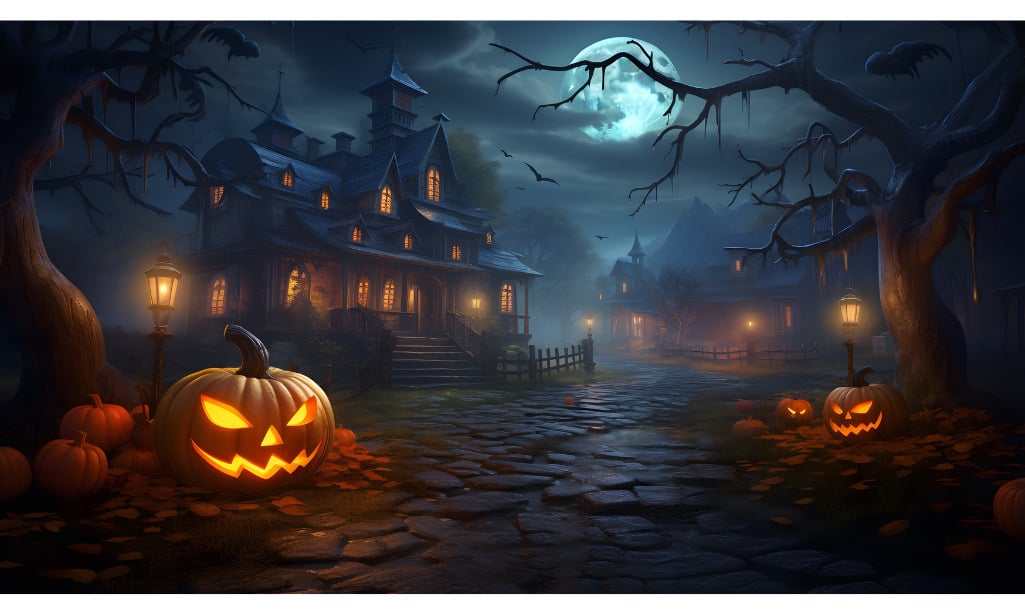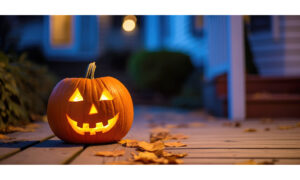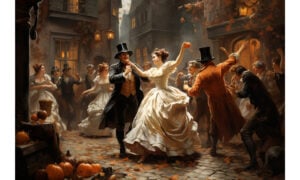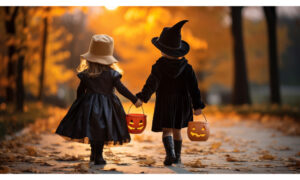Have you or your child ever wondered why people dress in costumes and go door-to-door yelling “trick or treat” at neighbors in hopes of scoring some delicious candy? Well, you’re about to find out as we look back at the history of Halloween, with some help from an awesome lesson by our friends at Elephango!
Halloween’s Celtic Origins
Some of the history of Halloween traces back to around 1000 B.C. to 390 A.D.. The Celts, who lived in Western Europe were highly superstitious and religious and believed in many gods. They celebrated the new year on November 1 because they thought this marked the end of summer and the beginning of the dark, cold winter months.
As part of their religious traditions, the Celts believed that on the night before the new year, the barrier between the worlds of the living and the dead world came down, allowing ghosts and spirits to wander the planet. They referred to the last day of the year (October 31) as the Festival of Samhain.
The Celts truly believed these ghosts would come to Earth to destroy their crops. For that reason, they created large bonfires to sacrifice crops and animals, then danced around the fires in animal costumes.
Why?
To make the ghosts happy, or so thought Celts believed. In exchange for these sacrifices, the Celts hoped the ghosts would leave their crops untouched.
The Romans’ New Halloween Traditions
The Romans overtook the Celtic region, and in so doing, they brought their own beliefs and traditions, leaving those of the Celts behind. One of those traditions was the Festival of Samhain. During the time of Roman rule, two festivals emerged out of Samhain: Feralia and Pomona.
Feralia was celebrated in late October to commemorate the passing of the dead into the other world. The Festival of Pomona was also celebrated near the end of October to honor Pomona, the goddess of fruits and trees. Many believe the Halloween tradition of bobbing for apples originated from the Festival of Pomona. This is because the Romans used the apple to symbolize Pomona.
The Spread of Christianity and New Traditions
Christianity soon began to spread throughout Rome, and with it came new holidays and traditions. On May 13, 609 A.D., the Catholic Pope Boniface IV established All Martyrs Day to commemorate those who died while spreading the mission of Christianity. An enormous feast was the highlight of the day.
A few years later, All Martyrs Day moved to November 1, incorporating the celebration of the saints into the festivities. Therefore, the name of the new holiday became All Saints’ Day.
In 1000 A.D., the Catholic church attempted to abolish the Festival of Samhain (still celebrated by some) in Europe and replace it with a similar holiday that celebrated Christian customs. November 2, the day after All Saints’ Day, was declared All Souls’ Day and was designated as a time to remember and pray for the souls of the dead.
All Souls’ Day celebrations featured large bonfires, costumes, and parades. People soon referred to the day before the festivities (October 31) as All Hallows Eve. That eventually turned into the name Halloween.
Early Halloween Celebrations & the Origin of Trick-or-Treating
There are a few theories regarding the origin of trick-or-treating. One involves people dressing as ghosts, demons, and other malevolent creatures, and performing antics in exchange for food and drink. This tradition, known as mumming, dates back to the Middle Ages.
Going back to the birth of All Saints’ Day in 1000 A.D., it is believed that poor people would visit the houses of wealthier families and receive pastries called soul cakes in exchange for promising to pray for the souls of the homeowners’ dead relatives. This became known as “souling” and caught on with children, who would go from door to door asking for gifts. Similarly, in Scotland and Ireland, young people took part in guiding. This tradition involved children dressing up in costume and accepting offerings from various households. Instead of pledging to pray for the dead, however, the kids sang songs, recited poems, told jokes, or performed other kinds of “tricks” before receiving fruit, nuts, or coins–otherwise known as treats.
The Irish are also credited with the invention of the jack-o’-lantern. During the celebrations of Samhain, as people went house to house looking for food and drinks, well, it was dark! To solve this dilemma, people would carve turnips, potatoes, and other root vegetables and add coal or candles to create makeshift lanterns. At times, people carved faces into these vegetables. Once Irish immigrants settled in America, they discovered a new vegetable. One that was larger and easier to carve than the vegetables at home. This was the winter squash, and the most famous type of winter squash is…the pumpkin!
As more European immigrants made their way to America in the early 20th century, Halloween and the traditions these immigrants brought with them began to spread throughout the country. The Irish and Scottish communities revived their old traditions of souling and guising in America. However, by the time of the Great Depression in the 1920s, Halloween had transformed into a night of pranks and mischief.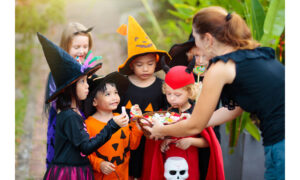
So, there you have it, the history of Halloween! For more interesting Halloween-related facts and info, check out Elephango.com.
Happy Halloween!






